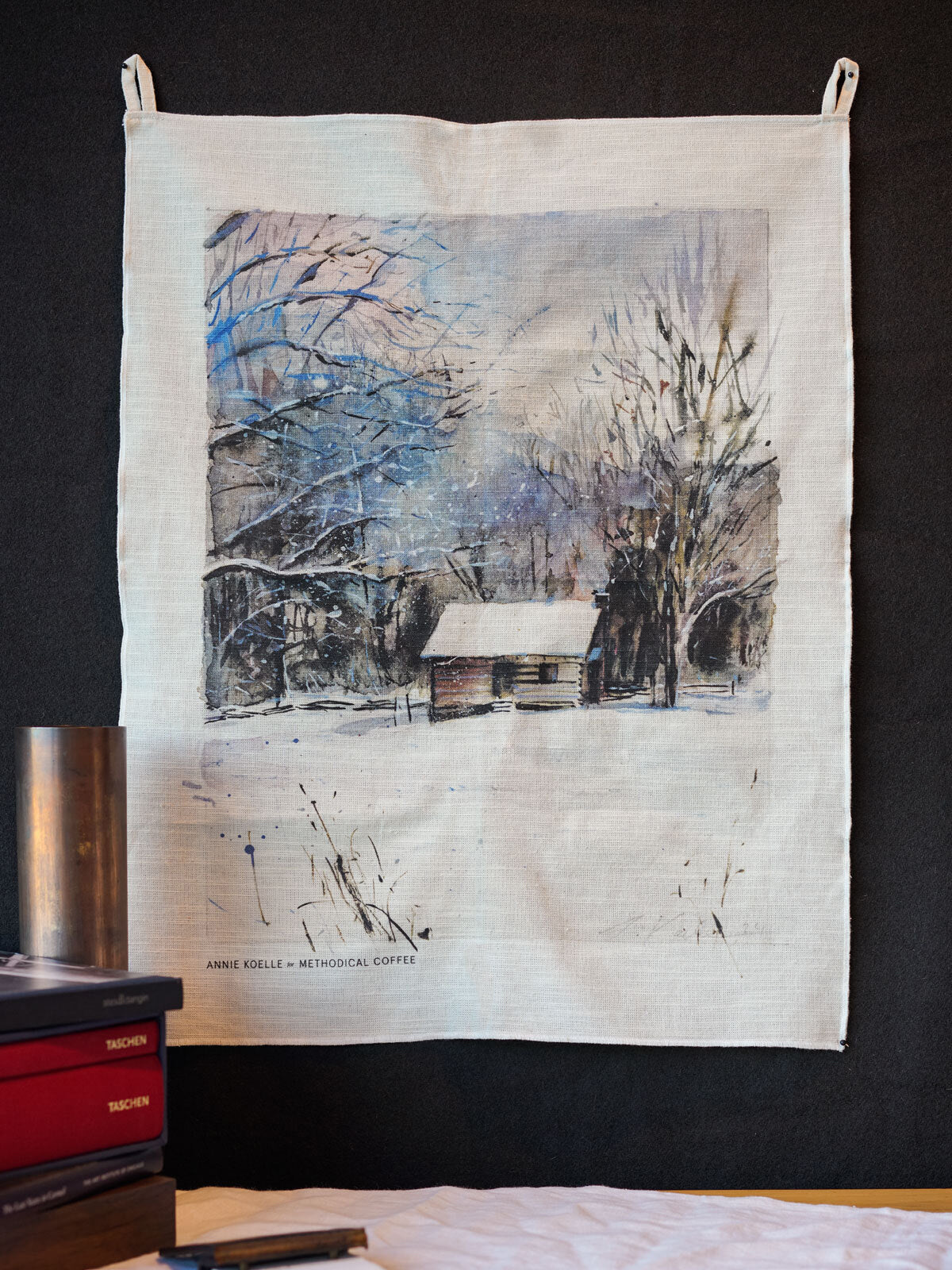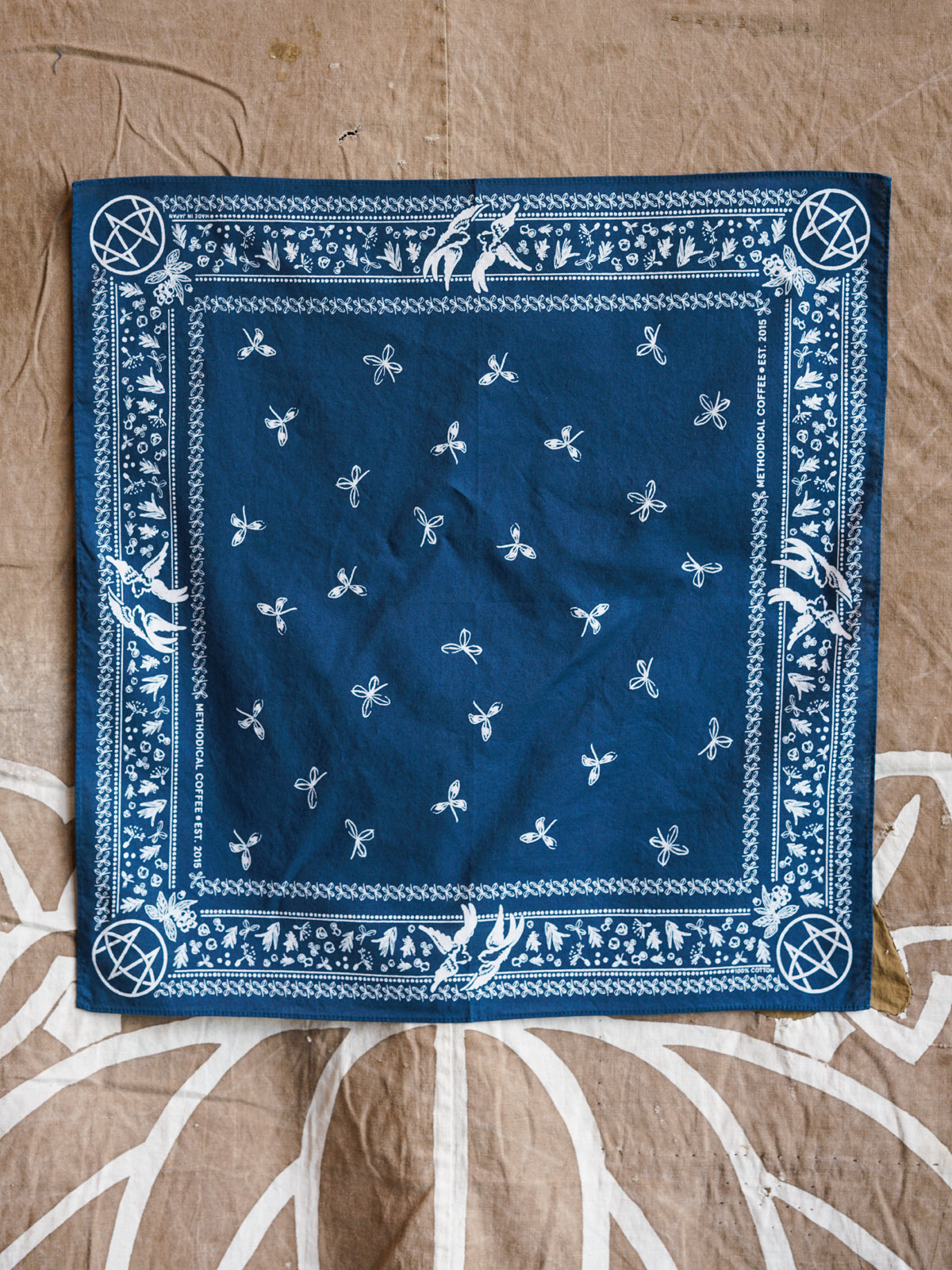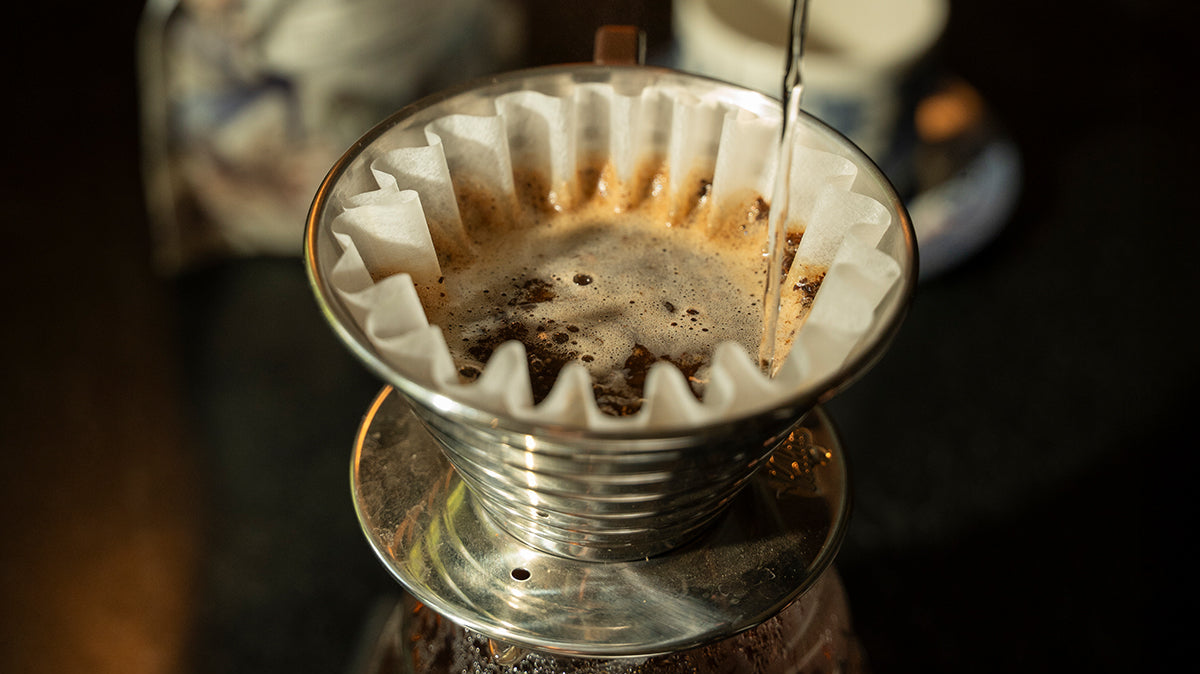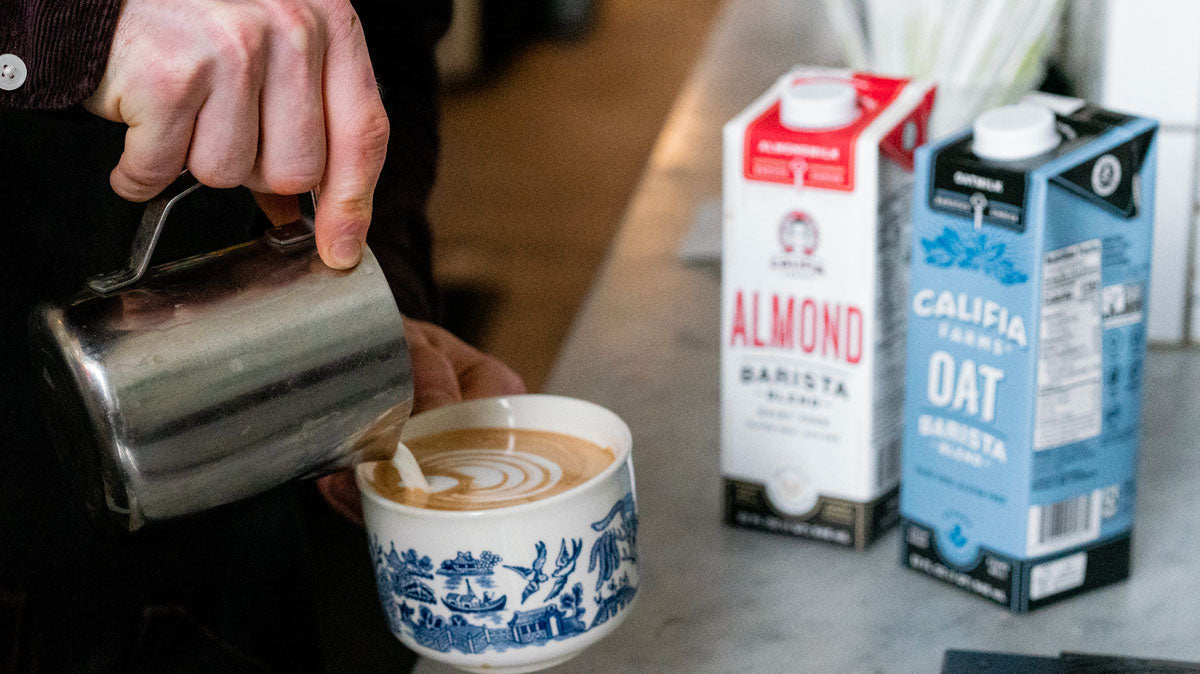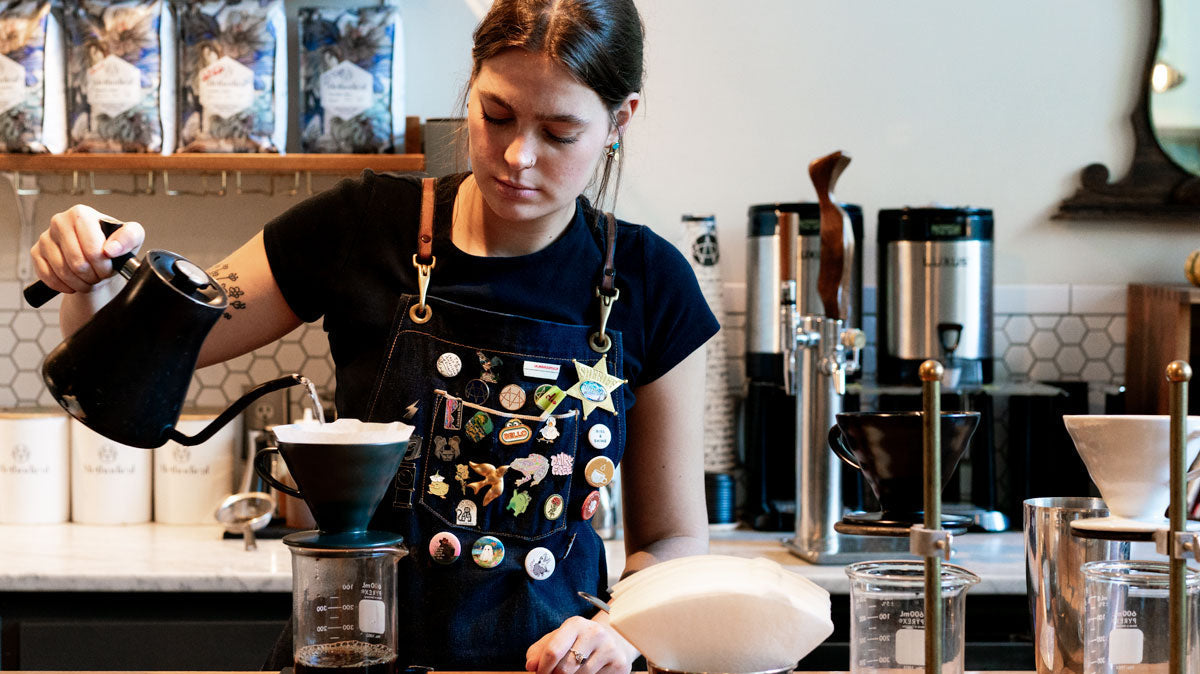Keeping your espresso machine clean and serviced is one of the most important parts of being a barista, whether you’re at home or in a coffee shop. Regularly cleaning your espresso machine ensures it will stay in top shape for a long time and that each shot of espresso you pull is as tasty as the last. In this guide, we’ll teach you everything you need to know about cleaning an espresso machine so you can level up your barista skills and keep making delicious espresso.
Why You Should Clean Your Espresso Machine
Keeping your espresso machine clean actually prolongs the life of the machine and preserves the flavor of your espresso. Whether you have an espresso machine with a water tank or one that’s hooked up to a water line, it’s likely you’re using hard water in the machine. Hard water is completely fine to use in an espresso machine, but it can also cause a buildup of minerals to form within the lines–commonly referred to as “limescale.”
Limescale can slowly build up over time and clog water lines in your espresso machine. This actually causes the machine to use more energy as it takes longer to pull water through the machine and heat it. It can even cause your espresso machine to break down, which is a costly and frustrating problem.
Limescale can affect the taste of your espresso as well by dulling the clarity and flavor profiles. Since limescale also inhibits the flow of water through the water lines, it can affect the overall quality of the espresso shots once they are pulled.
How Often Should You Clean Your Espresso Machine?
What counts as “regular” cleaning depends on how often you use your espresso machine.
In a Coffee Shop
If you work in a coffee shop, you should clean your espresso machines at least once a day. If you’re in a high-volume cafe where you’re making hundreds of espresso drinks a day, it’s wise to incorporate a cleaning regimen at least twice a day after each shift.
At Home
Home espresso machines are used far less frequently than ones in cafes. As a result, limescale builds up much more slowly than commercial espresso machines. Nevertheless, you should still give your espresso machine a good deep clean at least once a month to keep it in top condition.
What You Need to Clean Your Espresso Machine
To give your espresso machine a thorough clean, you’ll need the following materials:
- Large bowl or bucket of hot water (to dilute your cleaning solution)
- Espresso machine cleaning brush
- Cleaning solution for the espresso machine as well as for the steam wand
- Flathead screwdriver with a short handle
- Blank portafilter basket (also called a “backflush disk”)
- Cleaning cloth
Parts of An Espresso Machine
You’ll need to identify the following parts of your espresso machine so you can clean them correctly.
- Portafilter: The handled cup that holds your basket of coffee grounds. Typically, the handle of your portafilter will be made of wood or rubber and the rest will be stainless steel.
- Basket: The stainless steel basket that gets filled with espresso grounds and is then fitted inside the portafilter. The basket should have small holes for the brewed espresso to filter through.
- Portafilter spring: A stainless steel spring that helps keep the basket inside the portafilter.
- Blank portafilter basket or backflush disk: A stainless steel basket without holes–this piece is used to backflush your espresso machine.
- Group head: The apparatus that distributes hot water; the portafilter attaches to this piece.
- Dispersion screw: The screw that holds the group screen and gasket in place.
- Group gasket: A rubber gasket inside the group head to prevent leaks.
- Group screen: A piece of fine mesh that fits inside the group head and filters water.
- Steam wand or nozzle: The stainless steel rod that is used to steam milk.
- Drip tray: The metal grate that holds your espresso shot glasses and catches any dripping liquid.
How to Clean an Espresso Machine
Follow these steps to thoroughly clean your espresso machine.
1. Prepare Your Cleaning Solution
Whether you’ve got Cafiza cleaning solution, a different brand, or a homemade cleaning solution, prepare it according to packaging instructions. For example, you can dilute up to two teaspoons of Cafiza powder into a liter of water for a strong cleaning solution.
2. Disassemble the Portafilter
Remove the portafilter from the group head and remove the basket and portafilter spring. Place these pieces into your diluted cleaning solution. If your portafilter has a wooden or rubber handle, avoid submerging it into the cleaning solution as this could damage the handle.
3. Disassemble the Group Head
Take your short-handled flathead screwdriver and remove the dispersion screw holding the group head together. Once you’ve removed the screw, you should be able to remove the screen and access the gasket. Submerge the screw and group screen in your cleaning solution.
4. Scrub the Group Head
Either wet the brush with hot water from the machine or dip it in your cleaning solution and scrub the group head and gasket. Once you’ve finished scrubbing, wipe the group head with your cleaning cloth and rinse it well.
5. Reassemble the Group Head and Portafilter
After you’ve scrubbed the group head and cleaned the portafilter, rinse all the pieces well and reassemble them. We recommend hand-tightening the dispersion screw so as not to damage the mesh screen.
6. Backflush the Espresso Machine
Backflushing your espresso machine involves flushing water back through the lines to clean out any residual buildup in the machine. This is an incredibly important step that helps remove limescale and other buildup.
First, insert the blank basket into the portafilter. Then, put about ¼ to ½ a teaspoon of your cleaning powder into the basket. Attach the portafilter to the group head and turn the machine on for ten seconds so the water and cleaning powder can cycle through the machine. Repeat this process five more times to thoroughly backflush your machine.
Once the first backflushing process is complete, remove the portafilter and rinse it thoroughly. Purge the machine of any residual cleaning solution by letting the water run for a few seconds. Give the group head another scrub with a clean espresso brush and wipe it with your cleaning cloth.
Attach the portafilter again and repeat the backflushing process without any cleaning solution. This ensures the pipes are thoroughly rinsed from any residual limescale and cleaning solution. Remove the portafilter and purge the group head one last time to complete this step.
7. Clean the Steam Wand
Use your steam wand cleaning solution of choice for this step–we use Rinza. Dilute your cleaning solution according to package instructions in a steaming pitcher. Insert the steam wand into the solution and turn it on to purge the wand and heat the cleaning solution.
Let the wand sit in the cleaning solution for 5-10 minutes before removing it. Wipe the steam wand thoroughly with a clean towel and purge the steam wand again to flush out any remaining cleaning solution.
8. Remove and Clean the Drip Tray
Give the drip tray a good scrub to remove any buildup from coffee or milk that has dripped down into the tray. Reassemble the drip tray once it has been cleaned.
How to Clean An Espresso Grinder
Don’t forget to clean your espresso grinder so it continues to grind according to your calibration specs. A clean espresso grinder also helps your espresso stay fresh and delicious.
1. Remove the Hopper
Remove the hopper from the grinding machine. Remember to close the gate on the hopper so your coffee beans don’t spill everywhere!
2. Remove Leftover Coffee Beans
After you remove the hopper, there are usually beans left over in the top of the grinder. You can spoon these out and place them in an airtight container or you can run the grinder to purge them completely.
3. Vacuum the Grinder
Use a shop vacuum to clean out any remaining beans and grounds in the grinder. If you don’t, these could become stale and change the taste of your ground espresso.
4. Use Grinder Tablets to Finish Cleaning
You can use coffee grinder cleaning tablets for a deeper clean. You can find and purchase coffee cleaning tablets on most coffee supply websites. Just follow the package instructions when using these cleaning tablets, and be sure to purge the machine with a few coffee beans once complete.
FAQs for Cleaning an Espresso Machine
Can I Use Vinegar to Clean my Espresso Machine?
Yes. White vinegar is great for descaling your espresso machine when diluted with water. You should not use pure white vinegar to clean your espresso machine. Just make sure to check your espresso machine’s manual for any specific instructions from the manufacturer before using a vinegar solution. Keep in mind that commercial espresso machine cleaning solutions are specifically formulated to preserve the life of your machine and clean it safely and efficiently.
What Happens if You Don’t Descale Your Espresso Machine?
If you don’t regularly clean and descale your espresso machine, limescale can build up and obstruct the water lines in your machine. This can prevent you from pulling good espresso shots, use more energy than necessary, lengthen the time it takes to pull a shot of espresso, and even damage your machine.
Can I Use a Homemade Descaling Solution?
Yes. If you want a natural way to clean your espresso machine, you can use white vinegar or citric acid. Just be sure to dilute these natural cleaners with water so they do not damage your espresso machine. The ideal ratio for a citric acid solution is two tablespoons per quart of water. For vinegar, the ideal ratio is one part vinegar to four parts water–or an equal one-to-one ratio for a stronger solution.
You might also like:



